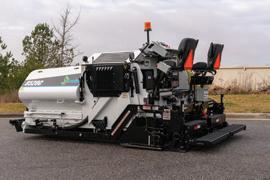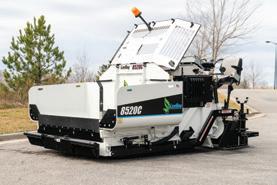




The asphalt industry and agency partners collaborate on strategies to reduce or eliminate carbon dioxide emissions







In today’s go-go world, achieving a realistic work-life balance (and retain our sanity) can seem like an impossible dream. Rather than lament this trend, CalAPA’s leadership has leaned into it, building into the association’s strategic plan various elements that strive to strengthen the association’s core educational and advocacy mission with activities that can also nourish the soul. We are, after all, an association made up of people.
In this issue of the California Asphalt Pavement Association’s magazine, we salute one of those big ideas turned into reality – CalAPA’s “Summit at the Summit” Executive Leadership Form at Lake Tahoe. The robust and diverse program held June 11-13 featured noted subject-matter experts and policy-makers providing insight on the asphalt industry market, trends and challenges. But the content-rich event also blended in fun activities and causal networking opportunities, such as golf and entertainment, and ample time to customize the experience with biking, hiking, boating and walking on the beach in one of the most scenic spots in California (even if it was just across the state border in Incline Village, Nevada). One participant called it an epic “work-cation.”
Breaking away from the daily grind to refresh, gain new insights and new inspiration proved very popular with our members and guests. We’re already working on next year’s event.
Shortly after the Summit we got word from the federal government, courtesy of the Internal Revenue Service, that they have recognized our newly formed California Asphalt Research & Educational Foundation as a 501c3 charitable organization. Our CARE Foundation Board of Directors has already approved a budget, goals and other activities all built around the idea of investing in our people for a brighter tomorrow. It was fitting news coming on the heels of our aspirational “Summit.”
Breaking away from the routine to gain new insights and new inspiration is also highlighted in this issue’s cover story about a collaborative effort between our industry and Caltrans to develop strategies to reduce greenhouse gas emissions in our operations. The productive talks are part of a larger story of how our industry is addressing climate-related issues. Abandoning the “that’s always the way we’ve done it” mentality to seek fresh approaches will be necessary for our industry to make meaningful progress to meet this complex challenge.
Finally, this issue profiles an industry leader, Bill Darnell, a former CalAPA board member who recently passed away. Bill was a big fan of collaboration, treating each other with respect, and always led by example. His legacy of selfless service to others is an inspiration to all who knew and admired him.
If there is a common theme to all of the above, it is a focus on working together and investing in the future success of our employees, our families and our fellow Californians. No impossible dream, our members are making this a reality.

Russell W. Snyder, CAE, Executive Director CalAPA


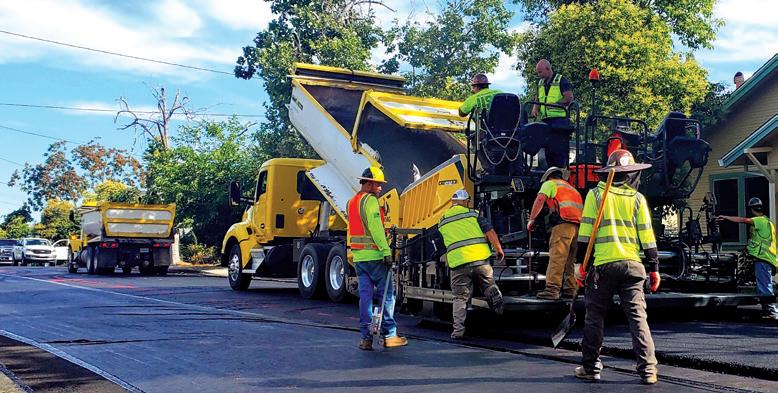
All Phase Construction, Inc. is a General Engineering Contractor specializing in underground utility work, excavation, site work, and asphalt and concrete construction. Serving Northern California for over 15 years, the company has the capability to handle a wide range of projects. They are large enough to manage multiple projects like a big company, yet small enough to cater to your project’s personal needs.
Garry Easley, President of All Phase, recently took delivery of a new Bomag CR1030T paving machine from Herrmann Equipment, Inc. He comments on the new machine, “When we needed a highway class size paver, we didn’t look further than Herrmann Equipment. We’ve had a long-standing relationship with them and have purchased other paving machines from them in the past. Bomag paving machines are superior, and our operators prefer them for their improved operator platform and control panel layout. The slope and grade control options also make it effortless to hold the grade.”
Easley adds, “What truly sets the machines apart is the service provided by Matt Herrmann and Herrmann Equipment. Their service is hands down the best I’ve ever received and second to none. I can call Matt at 2 a.m. from a job site, and he answers the phone and does his best to remedy any situation. Matt is incredibly knowledgeable about these machines; he listens and understands what contractors need and want. He even advocates with the manufacturer to discuss innovations to make the machines even better. Matt is a solid individual. Even if your paver is old, he never ceases to give the same service he would for a newer paver. He doesn’t just sell you a paver and disappear. He and Herrmann Equipment are our partners for life.”


Volume 28, Issue 4
Publisher’s Letter
Caltrans, industry launch decarbonization initiative; part of an accelerated climatefocused trend in California, nationally
Asphalt pavement industry goals for climate stewardship: toward net zero carbon emissions
Association news: Asphalt industry leaders gather at Lake Tahoe for epic 'Summit at the Summit' Executive Leadership Forum
In his own words: Selected remarks by CTC Chairman Carl Guardino at the CalAPA ‘Summit at the Summit’ in Lake Tahoe
Industry mourns the passing of longtime leader Bill Darnell 4 8 30 14 24 18
On the Cover: Cover illustration by Aldo Myftari, Construction Marketing Services, LLC.



HEADQUARTERS: P.O. Box 981300 • West Sacramento • CA 95798 (Mailing Address) 1550 Harbor Blvd., Suite 120 • West Sacramento • CA 95691 • (916) 791-5044
EXECUTIVE DIRECTOR: Russell W. Snyder, CAE, rsnyder@calapa.net
TECHNICAL DIRECTOR: Brandon M. Milar, P.E., bmilar@calapa.net
MEMBER SERVICES MANAGER: Sophie You, syou@calapa.net
MEMBER SERVICE COORDINATOR: Jackie Henry, jhenry@calapa.net
GUEST PUBLISHER: Russell W. Snyder, CAE, CalAPA
PUBLISHED BY: Construction Marketing Services, LLC • (909) 772-3121 P.O. Box 892977 • Temecula • CA 92589
GRAPHIC DESIGN: Aldo Myftari
CONTRIBUTING WRITERS: Brandon M. Milar, P.E., CalAPA & Russell W. Snyder, CAE, CalAPA
ADVERTISING SALES: Kerry Hoover, CMS, (909) 772-3121
© 2024 – All Rights Reserved. No portion of this
be
in any form without prior permission of the California Asphalt Pavement Association. California Asphalt is the official publication of the California Asphalt Pavement Association. This bimonthly magazine distributes to members of the California Asphalt Pavement Association; contractors; construction material producers; Federal, State and Local Government Officials; and others interested in asphalt pavements in California and gaining exclusive insight about the issues, trends and people that are shaping the future of the industry.

Over 100 di erent asphalt products and grades of material available
Rigorous in-house testing procedures ensure consistent quality
Value-added service at every step, from product selection to application
Full-service transportation solutions across the Paci c Northwest
A proactive approach to safety and environmental protection



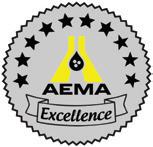




By Brandon Milar and Russell W. Snyder
The role of construction materials in helping to reduce Greenhouse Gas Emissions and other environmental impacts has been well-established and is part of a broad asphalt industry initiative, “The Road Forward,” with a goal of achieving net-zero carbon emissions in asphalt production and construction by 2050.
At the same time, federal and state governments have also embarked on their own ambitious efforts in this space, many related to the landmark 2021 “Infrastructure Investment & Jobs Act,” a $1 trillion federal infrastructure bill that has environmental goals woven throughout.
On July 1, Caltrans convened a meeting with construction industry representatives to kick off an effort focused on the decarbonization of construction and maintenance activities. The chief of the Caltrans Division Construction, Ray Hopkins, shared Caltrans’ observation of the current environmental focus and impact on Caltrans construction projects during the meeting at the Caltrans Headquarters building in downtown Sacramento.
While the development of Environmental Product Declarations (EPDs) for construction materials will assist the department to understand and reduce environmental impacts, the department representatives
said they also need to consider what other construction activities should be targeted to reduce carbon emissions.
The inaugural meeting was the first of what is expected to be many more in the future that will provide a forum for Caltrans and industry stakeholders to identify, develop and implement strategies for construction on the state’s highway system.
Contractors, such as CalAPA member George Reed, represented by Jordan Reed, provided overviews of current company efforts to identify and reduce carbon emissions in their operations. Industry organizations provided insight into industry strategies to also reduce emissions on a national basis, such as “The Road Forward,” which is being spearheaded by the National Asphalt Pavement Association, a CalAPA partner.
At the kickoff meeting, Caltrans provided an overview of the significant legislative effort to address climate impacts in California over the past 20 years, including major legislative milestones such as Assembly Bill 32 (AB32), the Global Warming Solutions Act of 2006, and Assembly Bill 1279 (AB1279), the California Climate Crisis Act of 2022.
The Caltrans State Materials Engineer, Tim Greutert, provided a rundown of the current EPD for construction materials program as well as a synopsis of federal funding related to Low-Carbon



materials. The central question: What does decarbonization look like for a construction site? The group acknowledged that the primary focus of this effort is to reduce GHG emissions during construction activity. Participants shared ideas, enacted strategies and experience with current available technologies. They discussed the three primary sources of GHG emissions related to combustion engine usage on construction sites: on-road vehicles (automobile, pick-up trucks, haul trucks, etc.), off-road vehicles (pavers, rollers, MTVs, etc.), and tools/generators.
The group noted there is broad familiarity with the increase in the availability of automobiles and light pick-up trucks/SUVs that are powered by electric motors. Unfortunately, the use of these vehicles for pavement construction has limitations. Companies that have acquired EV pick-up trucks, for example, reported they have found limitations related to vehicle range. This can be a result of long distances required to travel to project sites, and visiting multiple sites in a day. Route planning and identifying available charging locations along the route are critical to ensure viability. Also,

range is significantly diminished when towing large loads typically required on project sites. Availability of small equipment and portable generators has increased, and reliability also increased.
Off-Road vehicles, such as pavers and rollers, are not available, the group was told. Equipment manufacturers and contractors are developing and understanding their capabilities and practicality. Still, construction equipment requires significant power demands over long periods of time. While the power demand may be possible with the electric motor outputs, the energy source to operate these motors for extended periods of time are limited by current storage solutions. Partnerships among various industry stakeholders are working to develop solutions to these issues.
Caltrans expressed their intent to focus on strategies that provide incentives to early adopters that begin the transition to decarbonization. In order to understand any monetary incentives, Caltrans representatives said they would need to determine a monetary value to GHG. There are current efforts underway that
can help the Department in these areas, which include initiatives by the U.S. Environmental Protection Agency as well as the state’s GHG exchange programs.
Another strategy is to determine how to provide access to the energy grid at the project level. This would provide contractors and support stakeholders, including Caltrans, with the ability to charge support vehicles onsite and also provide energy for heavy equipment without having to move the equipment offsite or rely on energy storage to be brought on site. Caltrans and the construction industry will need to identify energy needs and demands on a project to identify how best to connect into the existing power grid. Providing power at the project site for contractor use could be the basis for an initial incentive program for early adopters and address range limitations of current EVs that could be used by project support personnel.
At the conclusion of the July 1 meeting, it was agreed that the collaboration will continue to move forward with additional meetings and information-sharing, development of initiatives, and tracking of progress.
Immediately afterward, participants expressed confidence that the collaborative approach between the public agency and the construction industry will result in meaningful results.
“I am excited to embark on this collaborative effort with our industry partners,” Hopkins told California Asphalt magazine. “It will take an ‘all of industry’ approach if we are going to meet the goal of AB 1279 to achieve carbon neutrality by 2045. We have started a discussion where we can learn from each other as well as compare best practices from around the globe. Our goal is to implement carbonreduction measures that are currently available while promoting innovation among our material suppliers and contractors.“
Hopkins added that, “To reach carbon neutrality, we must reduce the carbon footprint of construction activities, and sustainability must be viewed ‘as a change in business’ that requires commitment and buy-in from all sectors in the construction industry. This is a partnership that will benefit all of California and will help lead the nation in carbon-reduction efforts.”
Greutert noted that the department is seeing “increased state and federal legislation, with a mix of carrots and sticks,” and that legislation “is geared toward developing programs and practices that will create a lasting shift toward lower carbon emissions from the construction industry.”
Greutert’s Materials Engineering & Testing Services branch, part of the Engineering Services Division, has been actively involved in the department’s work with the construction industry related to EPDs, which are intended to provide detailed information about the environmental impacts of various construction materials. In recent years industry has been racing to understand EPDs, including critical inputs known as Product Category Rules, to ensure that the EPDs are robust
and are a true representation of the environmental impact of materials. A tool to create EPDs, developed by the National Asphalt Pavement Association (NAPA), a CalAPA partner, is called the “Emerald EcoLabel” and is in widespread use. CalAPA has conducted numerous educational sessions and webinars, in coordination with NAPA, Caltrans and the University of California Pavement Research Center (UCPRC), to raise awareness of EPDs, the tools available to create them, and the inputs that are required.
“EPDs are a tool that will help us better define the relative impacts of our materials decision making,” Greutert said. “Through the Federal Highway Administration’s Climate Challenge, Caltrans is reimbursing $4,500 per plant for EPD submissions. Our hope is that industry takes advantage of these funds.”
Greutert also views recycling of materials as an opportunity to make good progress in reducing environmental impacts of the production and utilization of construction materials. Asphalt is the world’s most recycled product, and the asphalt industry has been working with Caltrans engineers and academia, including the UCPRC, to study and implement mix designs that are durable and utilize higher levels of Reclaimed Asphalt Pavement (RAP).
“Caltrans and industry see recycling as a means to create more sustainable business practices,” Greutert said. “We want to create a mechanism that rewards emissions-reduction while constructing pavements that last.”
Progress on sustainability can seem maddingly slow as Caltrans and industry must balance environmental concerns with safety and ensuring that construction materials perform to specifications at a reasonable cost, and industry must be mindful of the investments required to meet new standards. Part of the kickoff decarbonization

meeting was meant to look for ways to share information to jump-start promising techniques that could possibly be implemented sooner, something Greutert and others called “supercharging innovation.”
Greutert acknowledged the complexity of some of these initiatives.
“To supercharge innovation, we must move to performance specs for carbon reduction properties as well as engineering properties,” Greutert said. “This will involve new technologies. This will require a lot of commitment from Caltrans and industry.” And, like his counterpart in the Division of Construction, Greutert said the initiative will require a heavy dose of collaboration, bothwith the Caltrans-industry Pavement & Materials Partnering Committee, other agency-industry forums, as well as academia.
Scott Taylor, co-chair of the CalAPA Environmental Committee and co-owner of Taylor Environmental Services, an environmental consulting firm, says the increasing pressure on the asphalt industry to reduce carbon emissions is appearing on many fronts, including from local, state and federal air quality regulators, environmental groups, community activists and others. [ Continued on page 12 ]
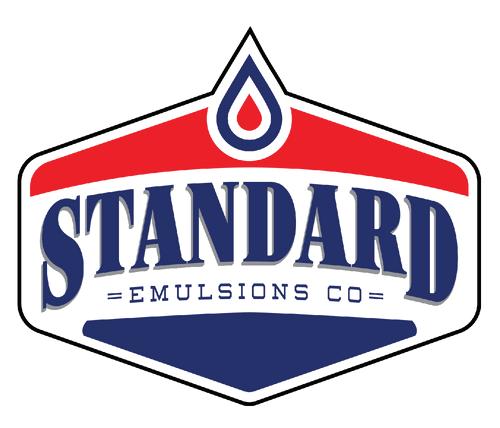







CalAPA members often see that pressure in the form of tighter permitting requirements and monitoring by local air district agencies, such as the South Coast Air Quality Management District in Southern California, which regulates stationary sources of air pollution (asphalt plants and refineries) and the California Air Resources Board (CARB), which regulates mobile sources (vehicle engines, on-road and off-road vehicles and construction equipment).
“There are so many different efforts to decarbonize it can be an overwhelming patchwork of regulation,” Taylor told California Asphalt magazine. “Some of these regulations involve efforts that are aspirational solutions which are still being developed, while at the same time strategic planning to determine an approach, and financing the solutions, needs to begin now. It can be hard to balance what decisions to make now and what should wait until there is more certainty. That is why participation in these early stages is important as each company is developing their approach.”
The asphalt pavement industry has a long history of improving its operations to make them more efficient and diminish environmental impacts, two things that often go hand-in-hand. Recent examples are ongoing efforts to make plants more energy efficient, converting to natural gas, and implementation of Warm Mix Asphalt technologies to lower the temperature, and energy, needed to produce asphalt mixes.
Recently, NAPA has placed a special emphasis on energy efficiency, and it has recently been recognized by the ENERGY STAR® program as “Partner of the Year” for developing resources that will enable the asphalt industry to better understand their energy performance and decrease greenhouse gas emissions from their facilities. ENERGY STAR® is a
government-backed symbol for energy efficiency. The public-private program is administered by the U.S. Environmental Protection Agency.
CalAPA has also put on asphalt plant optimization classes because a plant that runs more efficiently also is likely to run cleaner. The classes, by noted consultant T.J. Young, are well-attended.
At the same time, the industry has made a concerted effort in recent years to be more transparent to local communities, and the elected officials who represent them, by conducting plant tours and other outreach activities to demystify what happens in an asphalt plant, during construction, and how asphalt pavements are a critical component of the state’s transportation infrastructure, and connected to jobs, the economy and the state’s quality of life. Many who tour asphalt facilities, for example, are surprised to learn that asphalt covers more than 95% of paved surfaces in California, including freeways, local roads, residential streets, airfields and even water-storage facilities that provide clean drinking water to millions of Californians. CalAPA recently created an “asphalt in your community” page on its website with information from credible sources, including research, to dispel many myths about the industry, which nevertheless persist. Concurrently, public agencies are publishing vast amounts of data they collect via the permitting and monitoring process, and even community groups and individuals are taking advantage of low-cost air quality monitoring equipment to collect and publish data of questionable integrity. Making sense of this mountain of data is an increasing challenge for the industry as well as agency personnel.
California has a reputation nationally for being at the forefront of environmental regulations, and the asphalt industry in California
similarly has a reputation for responding to those regulations, leading to innovations that are eventually adopted in other states.
NAPA recognized this trend and organized many different initiatives and aspirations into its “The Road Forward” plan. Rolled out in 2022 to much fanfare, the plan has helped to focus many different activities as part of a larger effort to meet the 2050 netzero carbon emissions goal. Part of that plan is helping educate the industry of new technology, new techniques and new terminology. In “Goal 1,” for example, which sets out the 2050 net-zero target, the plan explains it thusly: “The industry will, on a net basis, not contribute any carbon emissions from its own operations (e.g., materials, equipment). Many countries, industries, and companies worldwide are pledging to reach net zero carbon emissions by 2050 — a goal echoed by the asphalt pavement industry.” The plan lays out a number of tactics to achieve that goal, including to “partner with owners to align policies, procedures, and specifications to promote net zero production and construction.” (See sidebar).
The Road Forward plan recognizes that there are some knowledge gaps to achieving the goal, which is why it calls out the “research and implementation gap” in its plan. NAPA, the Asphalt Institute, which represents liquid asphalt suppliers, and the various state asphalt pavement associations, including CalAPA, are contributing to pooled funds to pay for research to close those knowledge gaps with a heavy emphasis on developing practical strategies and techniques that can be implemented as soon as possible.
Jordan Reed with CalAPA producer member George Reed Co., is a past chair of the association and also active in
several national organizations. He reports that he has seen firsthand the influence of California’s environmental mindset and how it continues to migrate eastward.
Writing in this magazine in 2022, Reed remarked about the “high degree of interest in environmental and climate-change policies by representatives from other states.” He added, “It was clear to me that our industry is responding to these challenges by putting our best minds and our best efforts into developing practical solutions. There is clearly a hunger for knowledge about these issues.”
What is clear that the asphalt industry is incorporating “decarbonization” as an essential term in its technical glossary alongside “binder,” “density” and “gradation.” To properly use it in a sentence, as was done in school, the following example would seem fitting: “The asphalt industry
is committed to a strategy of decarbonization.” CA
Brandon Milar, P.E., is the Director of Technical Services for the California Asphalt Pavement Association (CalAPA). Russell W. Snyder, CAE, is executive director of the association.
Reed, J. (2022) “Publisher’s Letter,” California Asphalt, Journal of the California Asphalt Pavement Association, 2022 Environmental Issue, Page 4.
National Asphalt Pavement Association (2024) “The Road Forward: A Vision for Net Zero Carbon Emissions for the Asphalt Pavement Industry.” Accessed July 22, 2024: https://www.asphaltpavement.org/ climate
ENERGY STAR ® (2024), administered by the U.S. Environmental Protection Agency, was created in 1992 as a public-private partnership to deliver































cost-saving energy efficiency solutions that protect the climate, improve air quality and protect public health. Accessed July 22, 2024: https://www.energystar.gov/
National Asphalt Pavement Association (2024) Emerald Eco-Label EPD Program. Accessed July 22, 2024: https://www.asphaltpavement.org/ programs/napa-programs/emeraldeco-label
Miller, L, Ciavola, B. and Mukherjee, A. (2024) “EPD Benchmark for Asphalt Mixtures” SIP-108. Published Feb. 27, 2024. https://www.asphaltpavement. org/uploads/documents/ EPD_Program/NAPA-SIP108EPDBenchmarkForAsphaltMixturesFeb2024.pdf
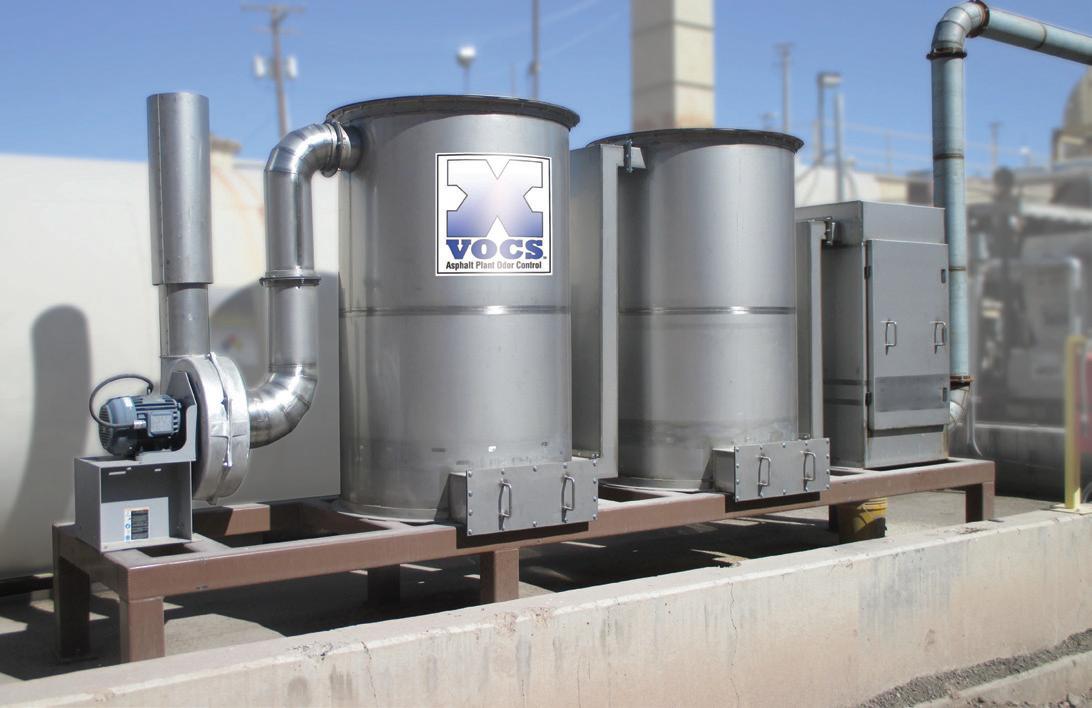

INDUSTRY GOAL 1
Achieve net zero carbon emissions during asphalt production and construction by 2050. Scope 1 Emissions
The industry will, on a net basis, not contribute any carbon emissions from its own operations (e.g., materials, equipment). Many countries, industries, and companies worldwide are pledging to reach net zero carbon emissions by 2050 — a goal echoed by the asphalt pavement industry.
A. Understand key drivers of asphalt production and construction emissions.
B. Encourage alternative and renewable fuel use at asphalt plants to reduce carbon emissions.
C. Partner with owners to align policies, procedures, and specifications to promote net zero production and construction.
D. Promote the use of WMA technology to reduce temperatures and emissions during asphalt mixture production.
E. Partner with equipment manufacturers to align industry plans and product development to reduce emissions during production and construction.
F. Advance adoption of advanced logistical technologies for improved trucking efficiency.
G. Develop an understanding and timeline for switching equipment and fleet to cleaner energy sources.
H. Identify best practices for reducing energy consumption of equipment during the construction phase.
I. Explore opportunities to identify and establish new programs to aid in capital investments needed to achieve net zero.
RESEARCH & IMPLEMENTATION GAP
• Research technologies that would allow a 50% reduction in energy and associated emissions required to produce asphalt mixtures.

Source: https://www.asphaltpavement.org/climate/industry-goals
INDUSTRY GOAL 2
Partner with customers to reduce emissions through pavement quality, durability, longevity, and efficiency standards by 2050. Downstream Scope 3 Emissions
The asphalt industry relies on customers and stakeholders to achieve net zero carbon emissions. Owners must ask for products and implement practices that lead to net zero emissions. NAPA commits to partnering with stakeholders to achieve a sustainable business case for these actions.
A. Educate owners on alternative construction scheduling to reduce emissions associated with work zone congestions.
B. Increase pavement life through expanded adoption of perpetual pavement design methodologies, improved construction practices, and pavement preservation.
C. Educate decision-makers and users on factors that influence rolling resistance.
D. Work with specifying agencies to develop contract incentives for actions that reduce emissions through improved pavement quality or improved vehicular fuel economy.
• Develop a framework for owners to optimize pavement maintenance to reduce vehicular emissions by maintaining pavement smoothness.
• Complete new research to further define the impact of pavement properties that affect rolling resistance.
Source: the National Asphalt Pavement Association.
Develop a net zero materials supply chain by 2050. Upstream Scope 3 Emissions
Supplier partnerships and net zero commitments are critical for the industry to achieve net zero carbon emissions. What the industry asks of and gets from its suppliers counts toward its own net zero goal.
A. Advance the use of recycled and innovative sustainable materials in all asphalt pavement mixtures through the use of LCA-based tools coupled with Balanced Mix Design (BMD) and performance metrics.
B. Engage with upstream suppliers to accelerate emission reductions in the material supply chain.
C. Explore the industry’s role in advancing other asphalt recycling technologies –– cold central plant recycling (CCPR), cold in-place recycling, full-depth reclamation, and hot in-place recycling – as an opportunity to positively impact the carbon footprint of asphalt pavement.
D. Advocate for the appropriate use of RAP and other recycled materials in asphalt mixtures.
• Quantify upstream impacts of additive production.
• Research the use of new forms of asphalt binder and/or asphalt binder replacements.
• Encourage a culture to allow for the rapid assessment of new materials that could be used in asphalt mixtures through a BMD approach.
• Educate producers and owners on the use and acceptance of performance tests used in BMD

to allow for the development of specifications that encourage innovation in materials and construction.
• Conduct research that would allow the asphalt pavement industry to increase RAP content to greater than 40%.
Transition to electricity from renewable energy providers in support of net zero carbon electricity generation by 2050 and reduce electrical intensities. Scope 2 Emissions
The power generation industry is moving toward net zero carbon, which the asphalt industry can leverage to reduce its own emissions.
A. Transition to net zero energy where possible.
B. Increase electricity efficiency in operations.
To achieve net zero in the production of asphalt mixtures, carbon offsets will be necessary; however, it is the industry’s intention to use carbon offsets only as the last option. Industry will reduce emissions as much as technologically possible and use offsets to achieve net zero. Therefore, the current industry tactics associated with carbon offsets are:
• Explore the use of carbon offsets to reach net zero emissions.
• Explore the potential use of carbon offsets to monetize and incentivize industry practices that reduce GHG emissions.
The Mark of Excellence for the asphalt paving industry in California

In the increasingly competitive asphalt paving market, standing out from the crowd is not only essential, it’s a business imperative. The CalAPA Quality Paving Certificate™ is the gold standard for letting prospective customers know that your company has met the highest standards for excellence in the asphalt pavement industry as verified by an independent and respected authority in existence since 1953, the California Asphalt Pavement Association. Scan


When it comes to building roads, you want to do it as quickly and efficiently as possible. That’s why you choose Volvo. The hard-hitting rollers from Volvo offer greater uptime and higher performance, helping your productivity stay in the fast lane. Find the right equipment for your road-building projects with Volvo Construction Equipment & Services.
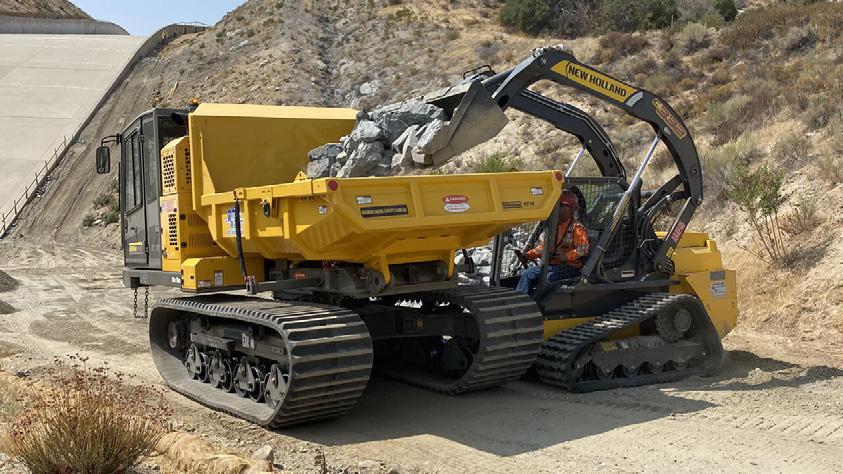






for a variety of
For over 30 years, we’ve been one of Southern California’s leading seal coat manufacturers and service providers. We’re here to support your business with exceptional products and lasting value.
SUB CONTR AC TIN G
(High Per formance Seal) – No Track Tack
U IP M EN T REN TA L
6000 Gal Job Site Tank Drop Deliveries
600 Gal Seal Tank Trailers SS1h Tank Trailers
OverKote® Asphalt Pavement Sealer
SS-1h Emulsion Paving Fabric Rolls
Petrotac and Geo Textiles
Hot Soup Buckets Oil Flo & Oil Spot Sealer Latex Additives
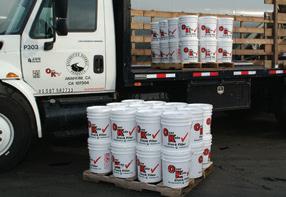


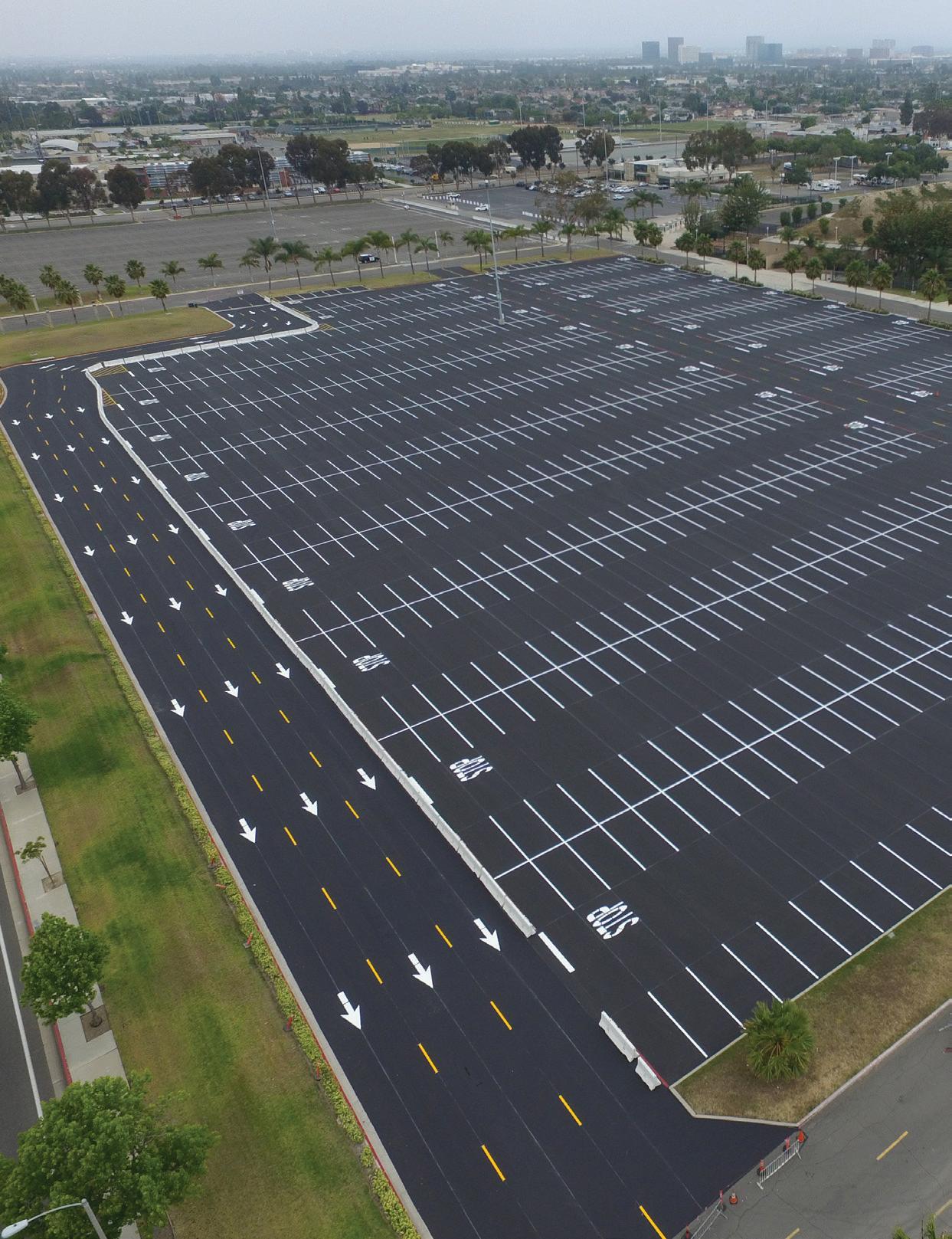

By Russell W. Snyder
California Transportation Commission Chairman Carl Guardino stepped to the microphone at a Lake Tahoe Hotel conference room on a mission: to provide a gathering of asphalt industry leaders provocative insight on transportation planning and trends in California and beyond.
Noting that much has been achieved on the transportation front in recent years, he acknowledged that there is "a lot more to accomplish." And then he went on to say, "That's why my goal this morning is to focus on three key choices each of us must make to further ensure California's continued success. So, choice number one, is we can choose to be engaged, or we can choose to be enraged. Choice number two, we can fight over the crumbs, or we can grow the pie. And choice number three, we can show up and speak up, or we can be shut down."
The audience was listening so intently that you could hear a bird chirp outside. Guardino's compelling keynote speech came during the heart of the CalAPA "Summit at the Summit" Executive Leadership Forum June 11-13 that brought together more than 60 industry executives and influencers to assess the state of the asphalt industry in California, hear the latest about regulatory challenges, opportunities and trends.
As marketing for the event promised, insight, inspiration and fun were in abundance at the popular and scenic resort destination.
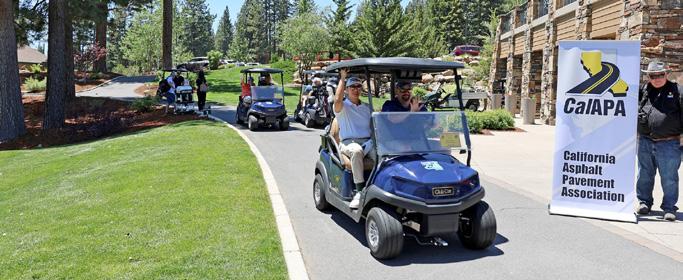
As one of the top transportation officials in the state, Guardino has served on the CTC since he was appointed to the commission in 2007 by Republican Gov. Arnold Schwarzenegger, and has since been reappointed by Democratic governors Jerry Brown and Gavin Newsom, burnishing his legendary consensus-builder reputation. His work on "self-help" funding for transportation in Santa Clara County, when he was longtime executive director of the Silicon Valley Leadership Group, helped establish the template for local transportation funding statewide.
In his talk, Guardino went on to stress to the receptive audience the importance of engagement in policy development, which often helps establish the parameters that guide the spending of billions of dollars of transportation funding made available by SB1, the $50 billion Road Repair & Accountability Act of 2017, and other transportation improvement funds. Those policy development guidelines often flow through the CTC, including the recently updated "Climate Action Plan for Transportation Infrastructure," which has been added to the myriad of other alphabet-soup planning documents (STIP,
And they're off! An amazing golf event at the Incline Village Championship Golf Course in Incline Village, NV, on June 11, 2024 kicked off the CalAPA "Summit at the Summit" Executive Leadership Forum.
SHOPP, ITIP, etc.) that bureaucrats consult when developing project planning, scoping, funding and scheduling documents.
In wedging the "Summit" speaking engagement in between his many personal and professional commitments (and charging stops for his electric vehicle), Guardino later wrote event planners "what an honor it was to be with you and your CalAPA colleagues" at the Summit and added, "Please thank the members of CalAPA for their engagement in our mutual efforts to improve the mobility options for all Californians."
Guardino was no stranger to CalAPA, having been keynote speaker at CalAPA’s Spring Asphalt Pavement Conference in Ontario in 2013. A chance encounter with Guardino earlier this year at legislative offices in Sacramento during CalAPA’s Capitol “Fly-in,”

during which he fondly recalled his previous speech at the CalAPA conference and expressed interest in a return engagement, resulted in the invitation.
Guardino's uplifting message of collaboration was bookended by remarks delivered by Reed Ryan, former executive director of the Utah Asphalt Pavement Association who earlier this year was named executive director of the Asphalt Pavement Alliance, a national cooperative venture supported by the National Asphalt Pavement Association, the Asphalt Institute and state asphalt pavement associations, including CalAPA. In highlighting the asphalt industry's many successes over the years in innovation, sustainability and engagement, Ryan delivered a pointed message for his California audience: "Stop apologizing."
He went on to explain how there is growing national recognition that California is helping lead the nation in innovation and sustainability, and should not be apologetic about it, as it engages with industry representatives in other states, nationally and even internationally. His remarks were soothing balm after other presenters provided candid and sometimes unsettling assessments of the difficult regulatory and political environment faced by the industry in the nation-state of California, which has long posed challenges for the industry to keep pace with rapid change and avoid potentially ruinous red tape.
Left: "Roughing it" at the golf event at the Incline Village Championship Golf Course in Incline Village, NV.
Below: A fearsome foursome at the golf event at the Incline Village Championship Golf Course in Incline Village, NV. Chris Barry, Beach Paving (left), Scott Metcalf, Ergon Asphalt & Emulsions, Rich Gilkey, San Joaquin Refinery Co. and Steve Cota, Acrisure.
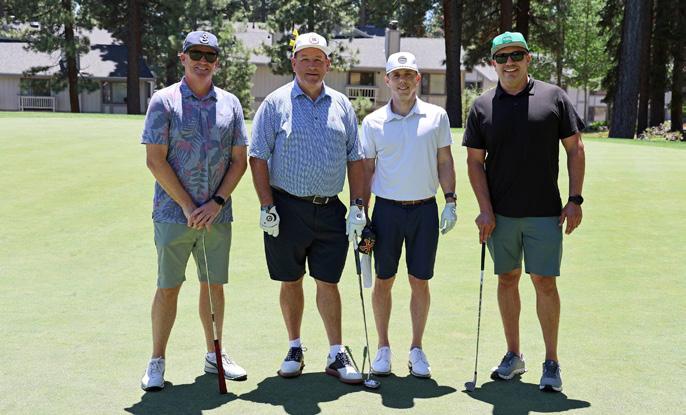
Scott Metcalf with Ergon Asphalt & Emulsions, the 2024 CalAPA Chairman, kicked off the formal program of the Summit on June 12 on behalf of the Board of Directors, which provided the vision for the Summit, a new event on CalAPA's calendar. Chris Gerber, owner of G3 Quality and a CalAPA Board Secretary, also delivered welcoming remarks on June 13.
The three-day event at the lakefront Hyatt Regency Hotel, Spa and Casino in Incline Village, NV, included a golf outing, CalAPA Board and Foundation meetings, a Women of Asphalt California Branch "Line Dancing" event and other activities.
The board's vision was to blend compelling and essential information for c-suite executives with a family-friendly environment to reinforce the association's commitment to promoting a healthy work-life balance. Feedback from attendees was that the event
scored on all counts, and there was broad agreement that it should be replicated.
“All the speakers were great,” one attendee said in a post-event survey. Many others commented on the spectacular setting — “epic,” “absolutely fantastic,” “amazing,” and “awesome” were some of the superlatives used. Many others commented on the great networking and variety of activities. “Overall you hit a HOME RUN on this event,” one respondent wrote. Another remarked on “the flexibility to do other things during your down time and still get some relaxation on a work-cation.”
Past CalAPA Chairman Scott Fraser gave the group an update on the work of the newly launched California Asphalt Research & Education (CARE) Foundation, which was formed earlier this year to push workforce recruitment and development and other activities.


The CARE Foundation board met in conjunction with the Summit, and approved a set of goals, Code of Ethics and other foundational policies. The Internal Revenue Service on June 20 recognized the CARE Foundation as a 501(c)3 charity, which opens the way for the foundation to accept donations that may be tax-deductible. The CARE Foundation Employer ID Number for those seeking to do so is: 99-1985283.
At the Summit, CalAPA's Sophie You highlighted the many activities of the indefatigable Women of Asphalt California Branch, which is cochaired by Mimi Le with MCK Services and Cathrina Barros, chief of the Caltrans Office of Asphalt Pavement. Supporting the Women of Asphalt activities was one of the driving forces behind creation of the CARE Foundation.
The June 12 program also included a first-ever cross-committee panel discussion featuring leaders
Left: There was plenty of time to catch up with old friends. Pictured, from left: Cheyenne Gould, Frank Costa, Tom Lavera, Martin Marietta, Scott Thomas, DeSilva Gates and, Rich Gilkey, San Joaquin Refining Co.
Left: Sunset in the Sierra Nevada Mountains was an amazing backdrop at the lakeside reception on June 11, 2024 at the start of the CalAPA "Summit at the Summit" Executive Leadership Forum of activities held June 11-13 at the Hyatt Regency Lake Tahoe in Incline Village, NV.
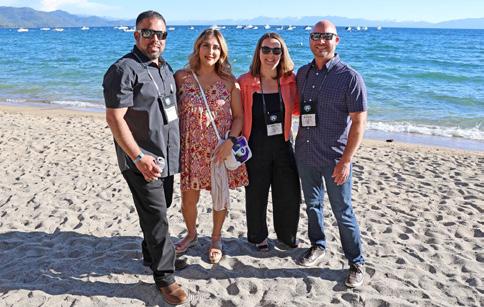
Above: CalAPA Board Member Chris Gerber with G3 Quality (right) at the lakeside reception. He was joined by (from left) Matt and Amber Ramos with G3 Quality, and Chris's wife, Kimberly.
of the CalAPA Environmental Committee, Scott Taylor with Taylor Environmental Services, and Scott Cohen with Sespe Consulting, plus Legislative Committee Chair Steve Ward with Pavement Recycling Systems, and Technical Advisory Committee representative (and newly minted Board Member) Phil Reader with the George Reed Co. Past CalAPA Chair Jordan Reed added a national perspective of the many ways CalAPA intersects with the interests of national organizations.
Since the event was targeted at a c-suite audience, the exclusive CalAPA asphalt market forecast for California was prominent on the program, with an insightful presentation delivered by report coauthor Crystal Howard with Crystal Waters Consulting. She is also a member of the CARE Foundation Board of Directors.
Jodie Muller, COO of the powerful Western States Petroleum
Association, provided a gripping presentation on the regulatory environment being faced by the energy sector, and noted that California is the world's third largest energy market, behind only the United States and China. Her presentation, “Drinking from a Regulatory Fire Hose,” resonated with many event attendees.
Amlan Mukerjee, Ph.D., P.E., Director of Sustainability for WAP Sustainability, Inc., provided the very latest information on the state of play for Environmental Product Declarations in California and across the nation. His presentations at the NAPA events, and earlier this year at the CalAPA Spring Asphalt Pavement Conference in Ontario, were so highly rated that CalAPA members demanded a return engagement, and he was gracious enough to accept despite some travel challenges.


With Trimble® Business Center you can efficiently calculate earthwork and material quantities for bids, prepare data for construction stakeout, build 3D models to optimize machine operation, track productivity and understand how profitable you are on any given project.



Reed Ryan, Executive Director of the Asphalt Pavement Alliance, provides a national perspective.
[ Continued from page 20 ]

Jodi Muller, COO of the Western States Petroleum Association, delivers remarks.
Interspersed between the highquality content the event included a gala sundown reception on the shores of Lake Tahoe featuring McAvoy Layne, the famed "Ghost of Mark Twain" impersonator, who charmed attendees young and old, and posed for plenty of "selfies" with those newfangled smart phones that were unheard of in Twain's day.
"I love my asphalt people," he was overheard to say more than once. Layne previously spoke at the Fall Asphalt Pavement Conference in Sacramento in 2019, so his appearance was another command performance.
The event dinner held overlooking the lake featured a spectacular surf-and-turf menu that had participants raving and also featured A-list entertainment by comic "Chicago" Steve Barkley, who kept attendees in stitches. Barkley has appeared on HBO, Comedy Central and on stage in Las Vegas and elsewhere with some of the biggest names in entertainment, including Jerry Seinfeld, Milton Berle, Dana Carvey, Danny Thomas, Robin
Left: CalAPA Executive Director Russell Snyder (center) moderates a panel discussion of CalAPA committee leaders at the CalAPA "Summit at the Summit" Executive Leadership Forum. Pictured, from left to right: Scott Taylor with Taylor Environmental Services, Phil Reader with the George Reed Co., Jordan Reed with the George Reed Co., Scott Cohen with Sespe Consulting, and Steve Ward with PRS.
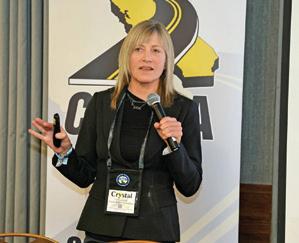
Crystal Howard with Crystal Waters Consulting, co-author of the CalAPA Asphalt Market Forecast for California, provides a market update.
Williams and Jay Leno, as well as opening for musicians The Doobie Brothers, Ray Charles, Chicago, Kenny Loggins, Neil Young, Smokey Robinson, George Jones, Gladys Knight and countless others.
Barkley joined many event attendees at the hotel casino after the dinner for an impromptu "after party" and later texted event organizers, "Thank you for giving me the opportunity to perform in front of your association," and added, "Great group of people! I thank you from the bottom of my heart!" It is a certainty that those who attended the performance will never look at an airport, or Col. Sanders, the same way again. Special thanks to Travis Milner, an up-and-coming Northern California comedy promoter and friend of the asphalt pavement industry, for securing Barkley's gig on behalf of the association. His partner is Eric Somers. Their website is: www.ComediansToGo.com
The "Summit at the Summit" was sponsored by CalAPA members Valero, CRH, Sully-Miller and Martin Marietta. Other support for

Comic "Chicago" Steve Barkley kept the audience in stitches.
the event was provided by BoDean Co., a CRH Company, Ergon Asphalt & Emulsions, DeSilva Gates Materials, Mercer-Fraser Company, Pavement Recycling Systems and San Joaquin Refining. Special thanks is extended to CalAPA member Construction Marketing Services, which produces CalAPA's magazine and annual directory, for providing marketing assistance and photography services for the event, including producing a snappy promotional video.
Photos of the event appear on CalAPA's various social media channels, including the association's Facebook page. Based on the enormous popularity of the event, including from those who could not attend this year but hoped it would be reprised next year, the CalAPA Board of Directors indicated the association will put on another "Summit" in 2025. CA
Russell W. Snyder, CAE, is executive director of the California Asphalt Pavement Association (CalAPA).
With two asphalt refineries in California, Valero can supply all of your asphalt needs, backed by award-winning customer service. As America’s 2nd largest asphalt producer, Valero has a strong commitment to environmental excellence and implements voluntary environmental initiatives that exceed government regulations. Valero uses state-of-the-art technology at its facilities.
The Valero Benicia Refinery is located northeast of San Francisco on the Carquinez Strait of San Francisco Bay. It processes sour crude oils into gasoline, diesel, jet fuel and asphalt. The refinery receives crude oil feedstocks via a marine dock and crude oil pipelines connected to a southern California crude oil delivery system. Most of the refinery's products are distributed via pipeline and truck rack into Northern California markets.
Since Valero’s acquisition in 2000, the facility has been continually improved and upgraded.

Valero offers a variety of asphalt products throughout our network.
• Performance Graded Asphalt Binders
• Sealcoat Asphalt Binders
• AC Grades
• Cutbacks
• Crack Sealant
• BURA for hot applied roofing applications
• Specialty Blended Asphalt

The Valero Wilmington Refinery is located near Los Angeles. The refinery is adjacent to the ports of Long Beach and Los Angeles. The refinery is connected by pipeline to marine terminals and associated dock facilities that move and store crude oil and other feedstocks. Refined petroleum products are distributed via pipeline systems to various third-party terminals in southern California, Nevada and Arizona.
Editor’s Note: California Transportation Commission
Chairman Carl Guardino was a featured speaker at the CalAPA “Summit at the Summit – Executive Leadership Forum” held June 11-13 in Incline Village, NV. The CTC, established in 1978, was created to provide unified oversight over California transportation policy. Among its chief responsibilities is scheduling and allocating funds for construction of highway, passenger rail, transit and other transportationrelated projects in California. The commission also advises and assists the governor’s transportation secretary and the Legislature in the formulation and evaluation of state policies and plans for California’s transportation programs. The commission consists of 11 voting members, nine of which are appointed by the governor and one each appointed by the leadership of the state Senate and state Assembly. Carl Guardino is the current chairman of the CTC. He was first appointed to the commission for a four-year term in 2007 by Republican Gov. Arnold Schwarzenegger, and has since been re-appointed by Democratic governors Jerry Brown (twice) and Gavin Newsom. He previously worked on the staff of Assemblyman Rusty Areias, and later in a government affairs capacity for Hewlett-Packard. For 24 years he was president and chief executive officer of the Silicon Valley Leadership Group, where he helped spearhead local and regional transportation ballot measures the resulted in billions worth of transportation improvements for Santa Clara
County, which includes San Jose, and the greater San Francisco Bay Area. Over his career he has also supported numerous charitable causes and championed various affordable housing initiatives. He founded the “Silicon Valley Turkey Trott” race that has raised millions of dollars for local charities. He is currently vice president of government affairs at Tarana Wireless. What follows are excerpts from his remarks to the CalAPA “Summit at the Summit – Executive Leadership Forum” delivered on June 12 in Incline Village, NV.
My goal this morning is to focus on three key choices, each of us must make, to further ensure California’s continued success. So, choice No. 1, we can choose to be engaged, or we can choose to be enraged. Choice No. 2, we can fight over the crumbs, or we can grow the pie. And choice No. 3, we can show up and speak up, or we can be shut down.
Let’s start with choice No. 1. We can choose to be engaged, or we can be enraged. We can build up our state, or we can let others tear it down. In the United States today … the coarseness of our political dialogue is more challenging than at any time in my 44 years in policy and political engagement. We can be a part of that anger and animosity, or we can be like salmon, and swim against the tide and be respectful and bridge-builders in the work that we do.
(Quoting Winston Churchill about various parties having permanent interests): While that sounds cold and Machiavellian,

what he was trying to say was, hey, we may have disagreed yesterday on something, and even vehemently disagreed, but if we treated each other with respect, and kindness, then we can still work together today on something that is important to us both. Which way would you rather conduct business and conduct your lives?
I remember in 2017 when the efforts for major transportation funding here in California were ramping up, Gov. (Jerry) Brown and his chief of staff, Nancy McFadden, reached out. His transportation secretary, Brian Kelly, and the Senate and Assembly Transportation chairs, Jim Beall and Jim Frazier, all pulled together. Those strong personalities didn’t always agree, and on occasion one or more had clashed, but they focused on our common ground, their permanent interests, to rebuild California’s transportation systems. Out of that alliance came Senate Bill 1, passed and signed into law in April of 2017. And I won’t forget weekly trips to Sacramento, calling Nancy McFadden and Brian Kelly, Jim Beall and Jim Frazier, as we put together lists of legislators that still needed to come on board to cast those precious votes to make those funding sources a reality. Because the reality we all know and face, in such a diverse state, is that what is important to a rural legislator from the Central Valley
may be vastly different than what is important to an urban legislator in Los Angeles. And we had to meet all those needs and tie those interests together. The results, as well all know, is a permanent set of funding sources for transportation, many of which – not all – but many of which rise with inflation so we don’t lose that buying power over time.
Now at the California Transportation Commission we have the responsibility to program and allocate the eight programs that flow from Senate Bill 1. You know them well – the SHOPP Program, the State Highway Operations & Protection Program is one. The Local Streets and Roads program. The Transit and Intercity Rail Capital Program. The State Transportation Improvement Program, or STIP. The Trade Corridor Enhancement Program, TCEP. The Solutions for Congested Corridors Program. The Local Partnership Program. And the Active Transportation Program. All told, thanks to our collective engagement in the SB1 advocacy efforts, walking those halls together, we have doubled the annual amount of funds available to program and allocate, from the commission, from roughly $5 billion a year, where we weren’t even treading water, we were going under – to now $12 billion a year that we have the responsibility to program and allocate. (Applause). And I brought it with me this morning (laughter).
How has this made a difference for your industry and the lives and livelihood of everyday Californians? Since 2017, through just the end of 2023 … $39.14 billion in SB1 funds have been programmed to 2,563 projects across those eight program areas. That’s $39.14 billion that didn’t exist without your advocacy and our collective efforts. The SHOPP alone, in the five-plus years since 2017 until the end of December 2023, more than a thousand projects have received
funding from the SB1 road maintenance and rehabilitation account, with a total of $28.2 billion in SHOPP funds from all fund sources programmed to those projects. Since SB1, and through the end of 2023, Caltrans and our private-sector partners have delivered projects to improve 14,856 lane-miles of pavement, 578,000 linear feet of culverts, and 1,512 bridges have been brought up to par and fixed. In our Local Streets and Roads program, all 482 cities and 58 counties are eligible to receive funding, and in the first five years of the program that generated $2.7 billion back to local communities to program to meet local needs. In our SB1 competitive program, we have several grant cycles coming up early in 2025. They include the Trade Corridor Enhancement Program, which in the first three cycles awarded $3.7 billion to 80 projects, with a total project value of nearly $12 billion. Cycle 4 should be awarded next year. The Solutions for Congested Corridors Program, in our first three cycles, we programmed $2 billion to 26 projects, leveraging more than $7 billion in additional federal, state and local funding sources. And again, Cycle 4 should be awarded next year.
And finally, the Local Partnership Program, which is 60% formulaic, 40% competitive, has already generated a billion and a half dollars in its first three cycles, with cycle 4 in 2025.
The second choice we have: we can fight over the crumbs, or we can grow the pie. Russell (Snyder) referred to my work on several local, regional and statewide transportation programs. And as I think about that work now, it brings up Winston Churchill once again. In the darkest days of World War II, he pulled together his war cabinet, and he looked at the men around that table – yes, they were all men on that war cabinet – and
he said, ‘Gentlemen, we’re out of money. I’m afraid we’re going to have to think.’ That is what we have been doing in California. California’s multi-billion (budget) deficit impacts our transportation funding plans for this year, next year and potentially the following year. But for the past 40 years … our regions and our counties have risen up to help meet our transportation funding needs. Forty years ago, it was 1984, in my home county of Santa Clara County, that the first self-help county was formed, and the self-help county movement was born. In that year, a 10-year, half-cent sales tax was placed on the ballot for our voters’ consideration by an organization I led as CEO for 24 years, the Silicon Valley Leadership Group, to help fund three major transportation improvements that had been lines on a Caltrans map for decades: the construction of Highway 85, and improvements on Highway 237 and Highway 101. Now over the past 40 years a total of 25 of our 58 counties have passed self-help transportation improvement measures with local funding. Those measures, collectively, add up to one of every two dollars invested in California’s transportation system. Can you imagine what our state would look like if we hadn’t decided to grow the pie, rather than fight over the crumbs? Those counties represent eight out of every 10 Californians and contribute, again, one of every two transportation dollars.
Now I assume most if not all of you are engaged in the Self-Help Counties Coalition. Keith Dunn, its leader, is a great partner for our collective efforts. If you are not, I encourage you to do so. In addition to the current 25 self-help counties, generating those local funds, four of those counties are going out this November for renewals for their existing measures and new expenditure plans to add more funds to these efforts. And they
are as diverse as our state. There’s the Central Valley, tiny Madera County, the wine country, Napa County, in the Inland Empire, Riverside County, and along our southern coast, San Diego County. Let’s help them finalize those expenditure plans, run smart campaigns, meet local needs, and generate more funds for transportation improvements. It has the side benefit of more jobs for the great work that you do.
When I was the CEO of the Silicon Valley Leadership Group, I had the pleasure and responsibility to organize, lead or co-lead six countywide and Bay Area-wide transportation funding measures that created over $72 billion over the life of those measures. A key element of almost every one of those measures was street maintenance and pothole repair. It’s the common ground where literally the rubber meets the road in these measures. Passing these measures is never easy. It requires all of our engagement and it also requires a willingness to find common ground, and compromise, and build consensus. When we ran each of our successful measures, we did it by respecting the points of view of diverse stakeholders in those communities while also placing the will of voters first. And I’ll just give two quick examples. When we would run those measures, we would go a flipchart and we would draw a wagon wheel with spokes on it, and we would say, ‘OK, as a diverse community, it’s not all business or tech people,’ like I was at that time. But it also includes AGC (Associated General Contractors) and CalAPA and it includes Realtors and realestate, and it includes the church community, the environmental
community, the social justice community. We would pick organizations that were respected in their spheres of influence as well as around that entire wheel. And we would bring them in – and this is key – we would bring them in at the beginning, not at the end of the process. A show of hands: Do you feel more ownership when you build the product or buy the product? How many feel more ownership if you actually build the product? Everyone. How many of you feel more ownership if you buy what someone else has built? No one. That’s what we did, and do, and it shows respect. It’s messy. It may take a few extra meetings, but it makes everyone know that they are respected and included in the decision-making process. The second thing we would do with respect to the voters, is pull together transportation professionals of our cities and towns and counties and regions, and bring them together and let them know, OK, if it’s going to be a 20-year measure that would generate this amount of money, we can’t do everything because finances are finite, what can we accomplish for the good of our region with that amount of money? As transportation professionals, what would you advise? Concurrently to those meetings, in a trusted space, where they weren’t parochial, they were professionals working together, we would do our polling of what voters think is worth reaching into their own wallets to fund. Those two would come together over time, macro to micro, to build that
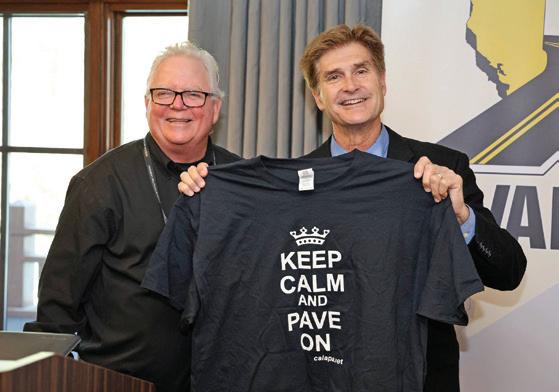
expenditure plan. And its why out of six transportation funding measures, we were blessed to win all six.
Choice No. 3: Show up and speak up, or be shut down. At the California Transportation Commission our average hearing covers 125 to 175 book items. That’s 1,200 to 2,000 pages of material in preparation for every hearing. It’s a six- to eight-inch stack of reading. It’s $2 billion to $3 billion in programming or allocations at every hearing. We meet as a full commission seven times each year over a two-anda-half day period, intentionally visiting regions around our state. When I joined the commission 18 years ago, six of our seven meetings would be in Sacramento because the people of California should come bowing down before us (laughs). We have changed that over the years. Now six of our seven meetings are outside of Sacramento – going to the people we are supposed to be serving, so they have access to engage with us. It’s made a tremendous difference. In addition to those seven, two-and-a-half day hearings a year, we hold two town halls, each two days long, in very remote parts of California, where they never have a major commission come to them. Those hearings usually bring together 250 to 500 people in person and on-line to participate. Now, here’s my point: [ Continued on page 28 ]
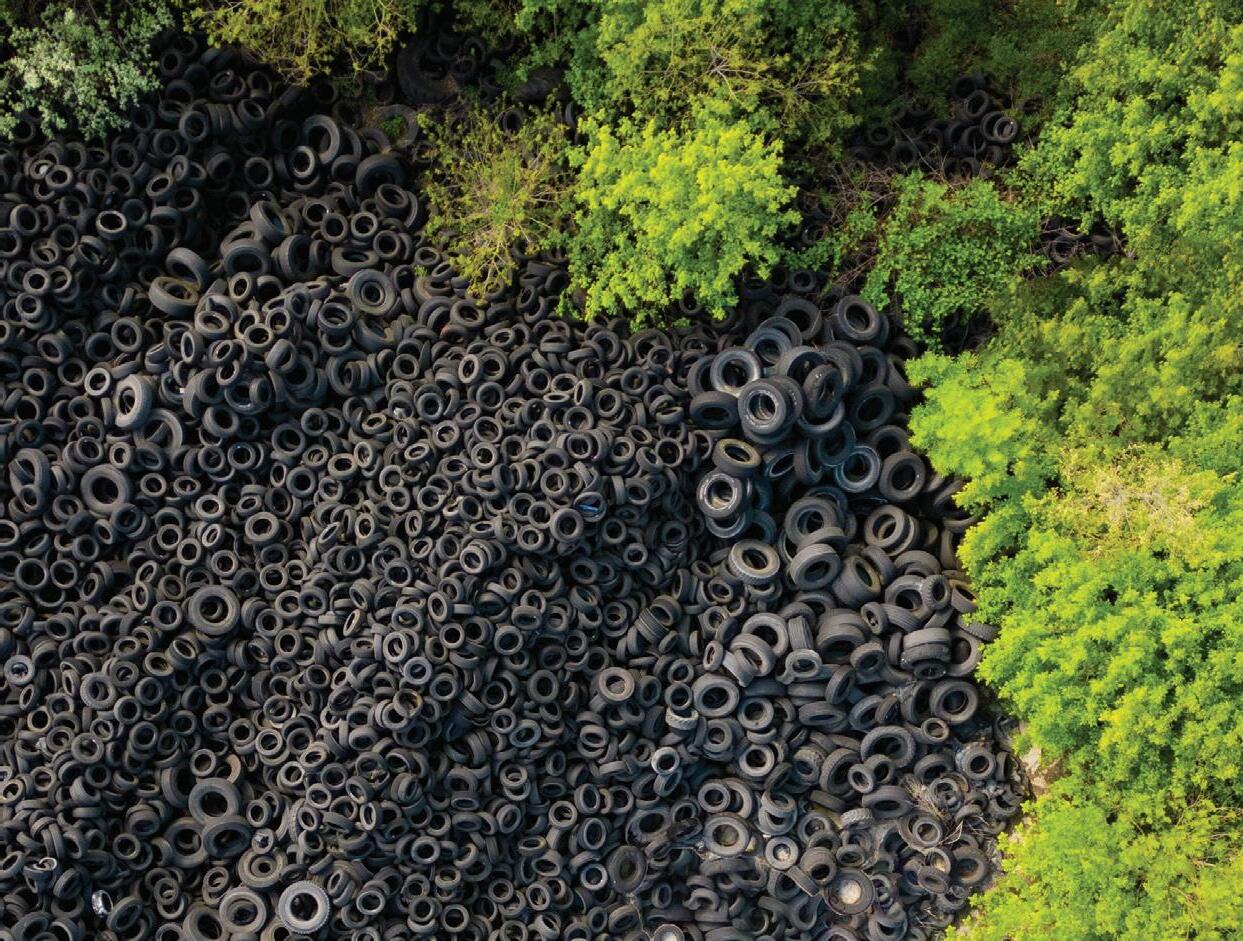
SigmaBond uses liquified end-of-life tires destined for landfills to create custom, high-performance asphalt formulations. By incorporating up to 40% tire rubber in the mix, SigmaBond leverages the performance properties of carbon black to enhance striping contrast and reduce
pavement discoloration. Combined with superior resistance to fatigue and easy workability, SigmaBond extends the life of roads and optimizes the life cycle cost of pavements — building a sustainable infrastructure for all.

If you don’t show up and make your voices heard, then you are going to be shut down because we won’t have, and hear, your point of view. Advocates from all perspectives and points of view engage deeply in our guideline process, come to the hearings, meet individually and collectively with commissioners and staff, line up and speak at the hearings, build coalitions of like-minded individuals, and partner with their local, state and federal officials to press forward projects, programs and policies of importance to them. Please continue to be among those individuals, to show up, stand up and speak up. Be part of our guidelines process. Why is that important? If you are building the guidelines, the criteria by which we’re going to consider funding choices, you see the end picture.
You can help us to guide it to improvements that are going to truly benefit Californians. If someone else builds those guidelines, you might not like their conclusions, and that colander, if you will, that we pour that money through in terms of where it goes. Partner with other organizations and other elected officials to speak with one voice on the improvements you believe are important to your community and our state, and get to know our professional staff at the CTC. I think it is truly the most transparent and available group of California staff professionals that I’ve ever worked with, and I’ve worked with a lot of boards and commissions.
There’s an old saying. You’ve heard it before, but it’s still true. If you’re not at the table, you’re on the menu. We need you at the table. Diverse perspectives and
points of view make for better decisions. This past year we’ve had a lot of advocacy groups come before us with their sincere points of view.
In conclusion, I really want to thank you for the vital work you are accomplishing each day for 39 million Californians. … All told, it was a 10 hour trip to get here (to Incline Village, NV) last night, I checked in a little before midnight. After Q&A today, I’ll get in my car and drive 10 hours back. So why did I drive a total of 20 hours for a 30-minute conversation? In one word, respect. I greatly respect what you are doing for every resident in those 482 cities and 58 counties that we call California. I need your voices at the table on a consistent basis, in a collaborative way, swimming up stream like salmon to be respectful, transparent and still effective.” CA



By Russell W. Snyder
Aclass act. A gentleman. A giant of the asphalt pavement industry. A leader.
Those were just a few of the many tributes that poured in from family, friends, business associates and others at the news of the passing of Bill Darnell, a longtime industry figure and co-founder of the Huntway Oil Company, which was later acquired by Valero, and also co-founder and board member of a regional association that eventually grew to become the statewide California Asphalt Pavement Association. He died peacefully in his home June 6 at the age of 87.
William G. "Bill" Darnell was born in Houston, Texas on July 20, 1936, attended local schools, and served in the United States Army Special Forces as part of the elite “Green Berets.” He was also a paratrooper, and in his postmilitary career served as a military adviser.
He moved to Benicia in 1982 after decades in Colorado, Montana and Southern California. He worked for the Douglas Oil Company and was a co-founder of Huntway Oil Company in 1982, which was later purchased by Valero Oil Company. He continued to work for Valero until his retirement in 2018. During that time he served as an officer and board member of CalAPA, and was later inducted by his peers into the CalAPA “Hall of Fame.”
Memorial services for Darnell, which included military honors, were held on June 28 at the First
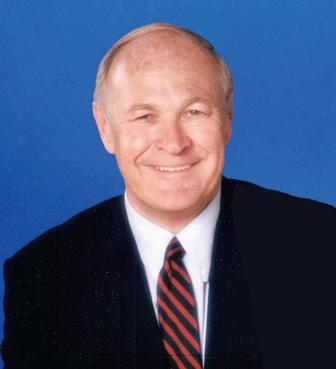
Baptist Church in Benicia. A reception and tribute honoring Darnell was held later in the day at the Benicia Yacht Club, where he was a longtime member.
Lyle Tullis of CalAPA asphalt producer member Tullis Inc. posted on Darnell’s tribute page that he was “one of the finest gentlemen the people of our industry have ever enjoyed.”
“He was much more than a business associate to me. I’m proud to have been able to call him my friend,” Tullis wrote. “So many times over the years Bill would drive clear to Redding to share a dinner, then drive back to the Bay. He was instrumental in guiding our company from the purchase of our first asphalt plant in the 80’s until his retirement. A man of unquestionable integrity, he will be missed.”
Michael Telfer with CalAPA member Telfer Oil offered similar sentiments.
“We at the Telfer companies have had many professional and personal relations with Bill,
and he was instrumental to the successes we enjoyed at the Telfer companies,” Telfer wrote. “I will miss our many breakfasts we had at the Hickory Pit restaurant in Walnut Creek. He would scratch out deals on a notepad that only he could decipher. Then he would order his favorite breakfast of chicken fried steak with extra gravy, then never ate more than half. Bill was such a heath nut I could not understand why he ordered it but he made up for it by eating only half!” Telfer also fondly recalled pheasant hunting trips and other activities with Darnell.
“Sometimes we were competitors, but most of the time we were his customer,” Telfer wrote. “I went to his charity events and he supported ours in kind, always a class act and a gentleman. I and all of the people at Telfer are saddened at Bill’s passing, I will miss him and all of us at Telfer will always be grateful for the opportunity to have known him and worked with him!”
In a "Publisher Letter" he authored for the 2014 Pavement Preservation issue of CalAPA's magazine, "California Asphalt," Darnell wrote, "When people ask me about our company's decadeslong support of the California Asphalt Pavement Association, my answer is simple: We are committed to our customers' success, and supporting the asphalt pavement association in California is one of the best ways we can help contribute to that success." He added, "In the
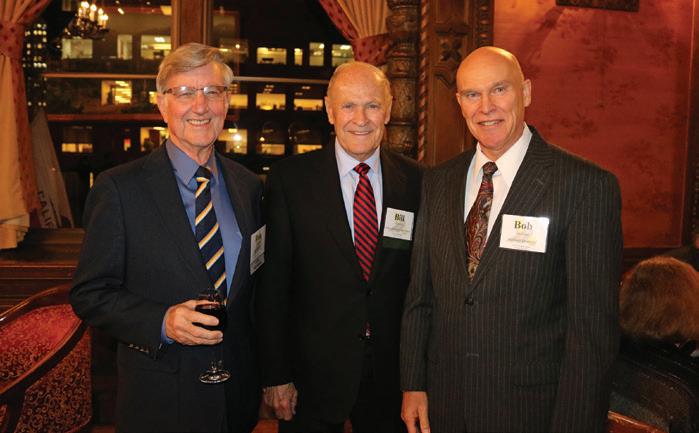
construction business, risk avoidance is just as important as profit-seeking, and the association has contributed to both sides of the ledger." He went on to cite a few prominent examples, and then concluded the piece with the following: "We are in a competitive world, but we have some important things going for us. First, we have a great product. Our customers — public and private owners and the transportation system users — tell us that all the time. We also have a great association here in California that has elevated our profile and is fighting for our best interests every single day. That's a winning combination, if you ask me."
Darnell also frequented many technical meetings with Caltrans and local agencies representing the industry. He was also a champion for small businesses, and supported many charitable causes throughout his life personally and through Valero's extensive engagement with local communities. Allison Ragan and Bo Reagan of Black Diamond Asphalt, a CalAPA member and certified small business, were one of those longtime business associates that were on hand to pay tribute to Darnell at his memorial service.
Upon his retirement from Valero, he was inducted into the CalAPA "Hall of Fame" for his decades of
contributions to the betterment of the industry. As word of his passing began to circulate among his former colleagues, more tributes began streaming in to CalAPA offices.
Len Nawrocki, also retired from Valero and a former member of the CalAPA Board of Directors and officer, credited Darnell with recruiting him into the oil industry. Nawrocki, who formerly worked for the U.S. Army Corps of Engineers, was working for the County of Santa Barbara when Darnell suggested he consider a career in the industry.
"Bill was the reason I got into the oil business," Nawrocki said, describing Darnell as his mentor. "He was always good to me. I never anticipated that I would go into a career in sales, but I loved it and it worked out, and we became good friends."
Roger Smith, former CalAPA Executive Director, recalls how Darnell was instrumental in hiring him into the association after a career as a materials engineer for Caltrans and later as a regional engineer for the Asphalt Institute. "Without his leadership and promotion, NCAPA would never have happened."
Smith recalled that Darnell was an active rower into his 70s, and had a poster in his office with a
Left: Bill Darnell (center) with fellow “Hall of Fame” members Ron Stickel (left) and Bob Humer, at the 2018 CalAPA Annual Dinner in Los Angeles.
depiction of a grinning character similar to the famous "Alfred E. Neuman" of Mad Magazine fame and the slogan, "Is your attitude showing?"
Sloan Larson, co-owner of CalAPA producer member Antioch Materials, a family-owned business, said, "He was wonderful, and pretty close with my parents."
At Darnell’s memorial services, many speakers recounted how Darnell was an avid skier, scuba diver, competitive rower, baseball coach and Boy Scout Leader. He was also a Boys and Girls Club Sponsor. He was also a longtime member and active at the Benicia Yacht Club.
His fellow veterans also spoke proudly of his leadership in the Green Berets and the lifelong friendships that grew out of his service to his country.
He is survived by his wife Delena; his three children, Max (Lindsay) Darnell, Mitch Darnell, and Tori Darnell; stepchildren Tim (Julie) & Pat (Denise) Empey; step children April (Bryan) Celosse, Mark (Sylvia) Honaker and John (Karen) Honaker; and his grandchildren Branton, Aubrey, Noah and stepgrandchildren Drake, Jack and Alex, and Samantha and John. He was preceded in death by his wife Penny Darnell in 2006.
In lieu of flowers, Darnell’s family said those interested in honoring Darnell could make contributions to two of his favorite charities, The Wounded Warriors Project, or the League of Heroes Inspired. CA
Russell W. Snyder, CAE, is executive director of the California Asphalt Pavement Association (CalAPA).



Dynapac's range of small and medium-size vibratory rollers are used to compact all types of soil. The rollers are suitable for most types of road construction, air elds, dam construction, harbor projects and industrial construction. Heavy-size vibratory rollers are used for a very wide range of applications. A special version with a padfoot drum (PD) is available for compacting cohesive soils.





























































































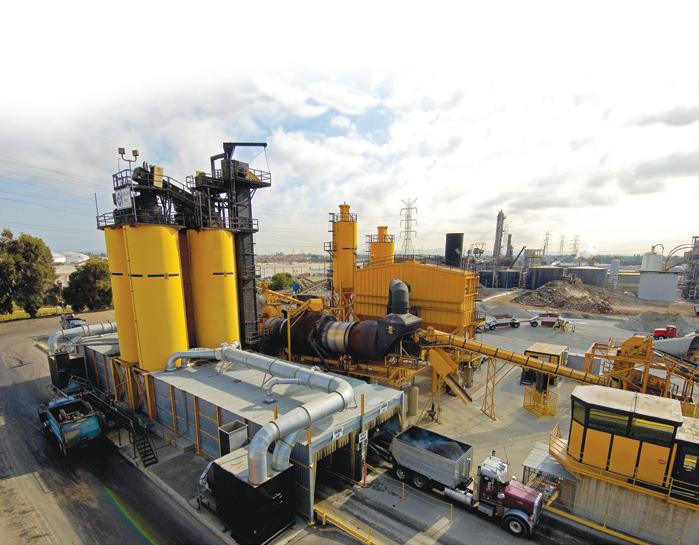



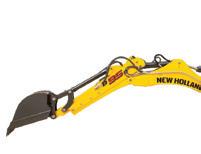







8520C Electric Asphalt Paver

Performance Features:
• 150 KW Max Electric Drive Motor
• 48 KWh Battery Pack
• 120VAC or 240VAC Onboard Charger; Rapid Charging Available
• Legend HD Screed Variable up to 15’
• LeeBoy Proven Hydraulic System
• 9 Ton Hopper
• 12” Diameter Quick Change Auger Assemblies
• Heavy Duty Conveyor Chains and Flight Bars
• Operator Friendly Toggle Switch Controlsvv
